Sulfur: Extraction Action
Get out with your loot, roguelike-style
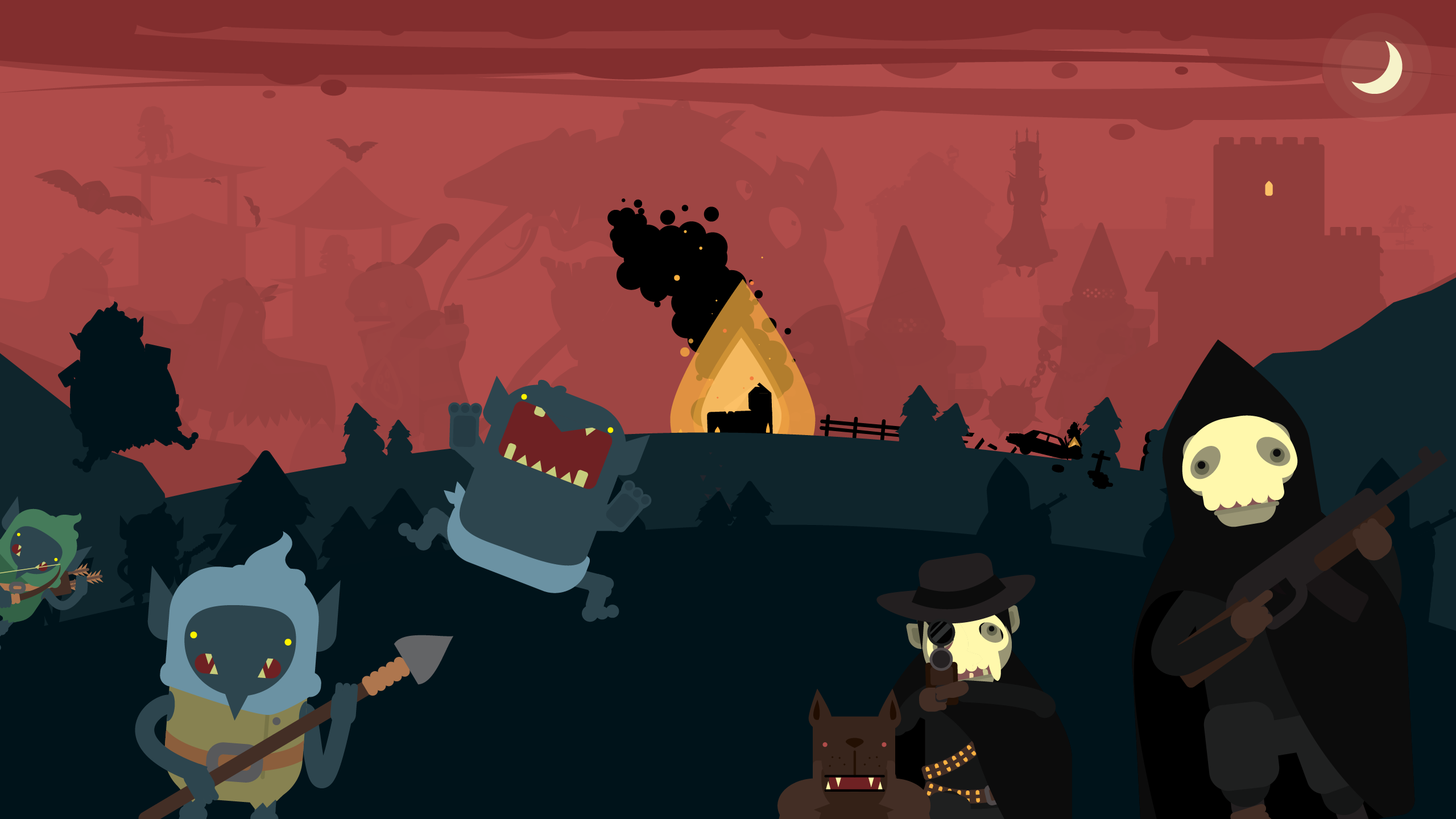
Whenever I play a game for review, I try to go in “blind", eschewing nearly all coverage and even descriptions of the game. My hope in doing so is that my opinion will be unaffected by those of others, and I can experience the game with fresh eyes and an open mind.
Occasionally this practice gets me in trouble, leaving me unprepared for what I’m about to face, and this was certainly the case with Sulfur. All I knew before firing up the game was that the learning curve was “punishing” (per fellow Superjump-er Ignas Vieversys) and that the combat was very difficult (per the game's Steam page). These descriptions are often synonymous with roguelikes, and knowing the prevalence of that genre these days, I assumed I would be making multiple runs, earning permanent unlocks for future runs, and maybe picking up the loot I lost from my corpse along the way. It took me about an hour and several frustratingly unsuccessful runs to realize my mistake and understand that, while definitely a roguelike, Sulfur hews much closer to an extraction shooter than anything else. Once I absorbed that critical difference, I quickly fell in love with the strategy inherent in each run, the addicting gameplay loop, and the immense amount of charming quirkiness packed into this experience.
Developer Perfect Random describes Sulfur as “a modern old-school action-adventure: Outsmart enemies, find treasure, improve weapons, harness powers”. The game is a mix of tough, frantic FPS combat, inventory management, character interaction like an RPG, and copious amounts of loot collecting. If you manage to escape a run alive you keep everything you acquired (hence the extraction shooter comparisons), and you can either stash it in your hub world inventory for later or take it back in for your next run. Dozens of guns and throwable weapons, clothing items, weapon upgrades, and more let you play how you want, with more than 3 million combinations possible. There’s even a basic cooking system with an untold number of recipes, providing a large chunk of the healing options at your disposal. This layer of strategy and customizability is the real meat of the game, and as the dungeons are procedurally generated, the level of replayability is off the charts. There’s a whole lot here to uncover and tinker with, and it will take players quite a while to even scratch the surface.
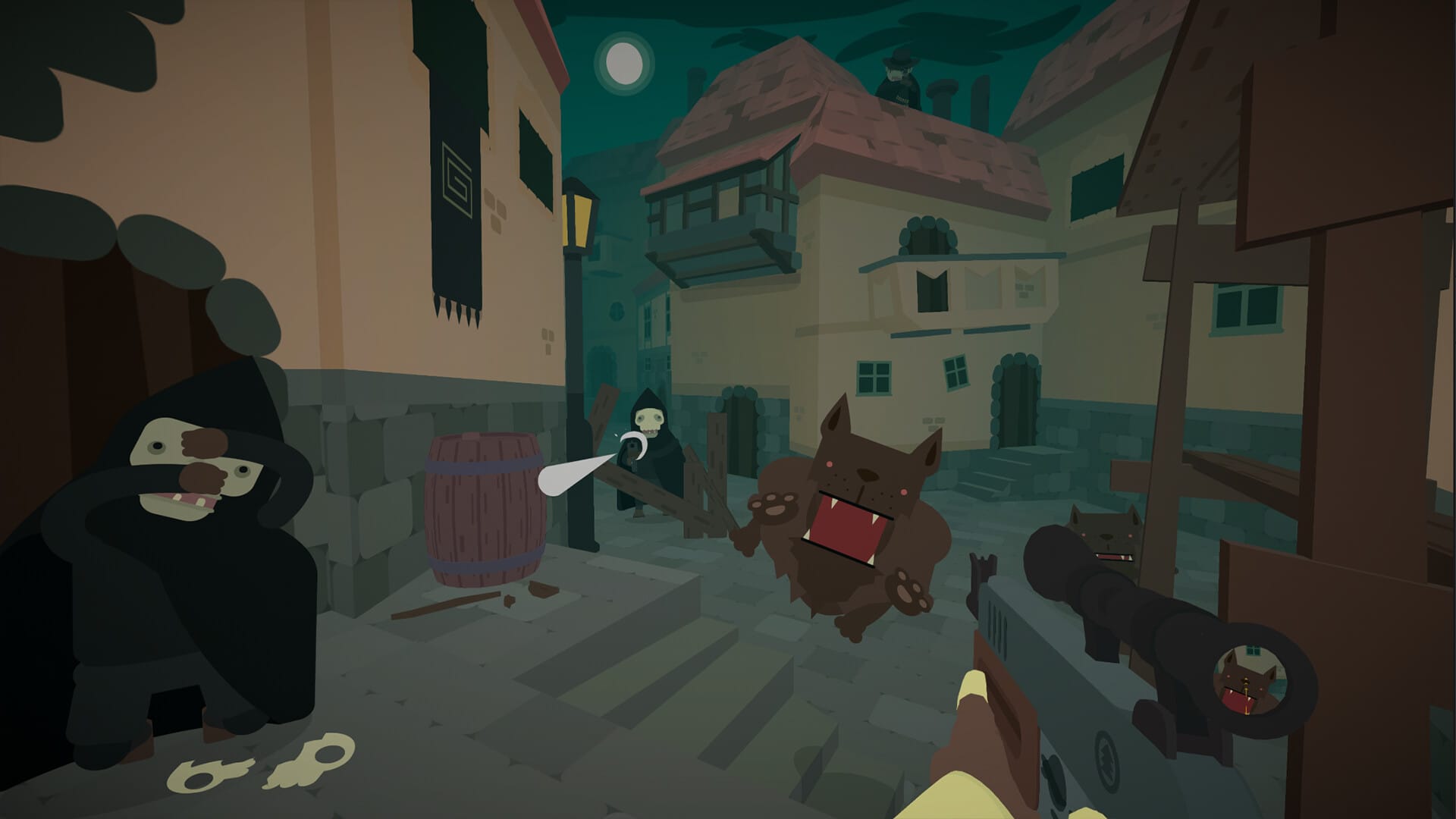
Players will inhabit the shoes of the unnamed leader of a church, which apparently has just been burned down by a witch. As the game begins, you’re following this witch when she flies away into a cave. You have to follow her and find out why she burned your church. You know this is your mission because your talking amulet tells you so, and thus the story begins. The amulet plays a crucial part in the gameplay loop so we’ll get back to that soon. After your first death you will awaken in a grave, and find out by talking with a group of strange and interesting characters that you and your followers are in some sort of afterlife, and finding the witch is the key to getting out alive. This afterlife acts as your hub world, with vendors for various items that you can visit before you begin the next run.
The first thing that will catch your attention is the game’s unique art style. Created by Simon Post, who also did the art for the What The? series of games, everything looks cartoony, with basic shapes and designs, but it all works together to create an interesting atmosphere. The characters and enemies have a two-dimensional look and feel. They remind me of cardboard cutouts bouncing toward you with deadly intent even though most of them look like cute puppets. The various dungeons (all procedurally generated but along different themes/biomes for each) consist of multiple levels, each containing several rooms to run through. They all look great, some dark and foreboding, some with huge open spaces while others have claustrophobic tunnels and mazes, making you fear every corner and turn. For a game that isn’t (and isn’t supposed to be) a graphical powerhouse, the dev team has done a great job conveying the world to the player.
The story is also intriguing and mysterious enough to keep you pushing through the frustrating early runs when you’re still building up your inventory. While a game like this doesn’t cry out for deep lore and narrative, I appreciated the dev team for putting in the effort to provide more than just the action. The guns, loot, and shooting are the stars here, but having more for those who want it is a nice perk.
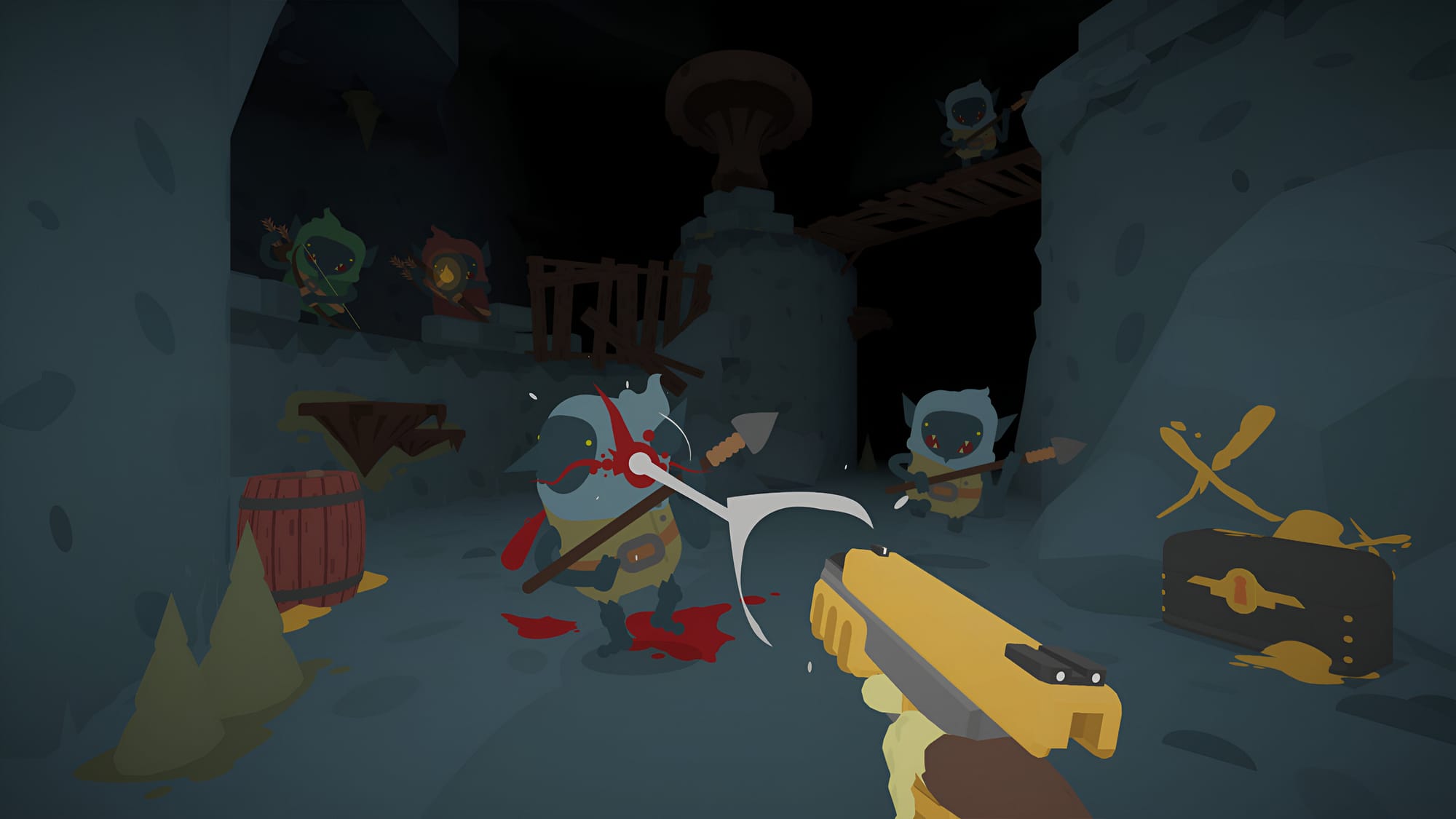
Pew Pew Goes the Inventory
I’m guessing most of you aren’t here for the story; you want the guns and the fun, so let’s dig into that. When you drop into the first dungeon on your initial run, you’ll have nothing more than a peashooter on your hip. Almost immediately you’ll receive a katana-style sword, and these are the only weapons you will be given automatically at the start of a new run after you die.
As you move through the rooms of each dungeon, you’ll have the opportunity to collect various forms of loot. Specially marked chests will contain new weapons, while other chests may contain food, clothing, items, and weapon upgrades such as silencers, stocks, gunsights, and much more. Barrels can be smashed with your sword to reveal coins, with which you can buy other weapons and items from in-dungeon vendors or those in the hub world. Scattered throughout the rooms are also various types of food items (mushrooms, etc.) that can be either consumed directly or cooked in a cauldron, which will appear from time to time. The cooking system is fairly basic but there are many recipes to uncover (hint: cooked food gives you more health recovery than the raw ingredients) and when/what to eat is all part of the game’s underlying strategy.
What makes the game more than just a basic shooter is the layer of strategy, customization, and inventory management behind the action. Every weapon has a rank meter, which fills up the more you use the gun. With each level increase, the weapon can be upgraded with an enhancement or oil, which are both ways to affect the gun's stats and abilities. You might decrease the bullet spread or increase damage, make the bullets bigger, or have the chance for an elemental effect like freezing or burning. The right gun with the right upgrades can make all the difference in your run, but once you apply them to a weapon they can't be removed so it pays to be thoughtful about the process.
Anything you pick up has to fit into a relatively traditional grid-based inventory system, with two quick-access slots for weapons and three for items. What you keep, what you consume, and what you throw away will be as much of a focus as staying alive in the dungeons, and you'll always want to keep some slots open for a new weapon and plenty of healing food items, for when the action gets too heavy to handle.
The dungeons contain quite a bit of platforming, so what you can access will depend on the layout of the room’s various features and the upgrades you’ve chosen to equip. There is no double jump by default, but you will occasionally find a shoe that carries the ability for a second jump, which will immediately become one of your favorite items. I had it for about one run and it broke my heart when I lost it due to an untimely dog attack. Some rooms have water features, and you can swim, but only in very rare circumstances will you find anything below the surface that you can use.
As with any extraction shooter, the most crucial aspect of a run is getting yourself and your loot out safely. In Sulfur, that revolves largely around the talking amulet I mentioned earlier. When fully charged, the amulet can instantly transport you (and all your gear) back to the underworld hub from anywhere in a dungeon. That particular layer of strategy involves how you charge the amulet and when to use it. Midway through each dungeon is an altar that contains the energy that also powers the amulet. Get to the altar and hold down the button, and presto, the amulet is ready to go. If you don’t think you can beat the end boss but want to keep your gear, fire up the go-home machine and save all your goodies for the next run. There is also the option, if you have the spare change, to have the old man in the hub world charge the medallion for you, at a cost of 1,000 coins.
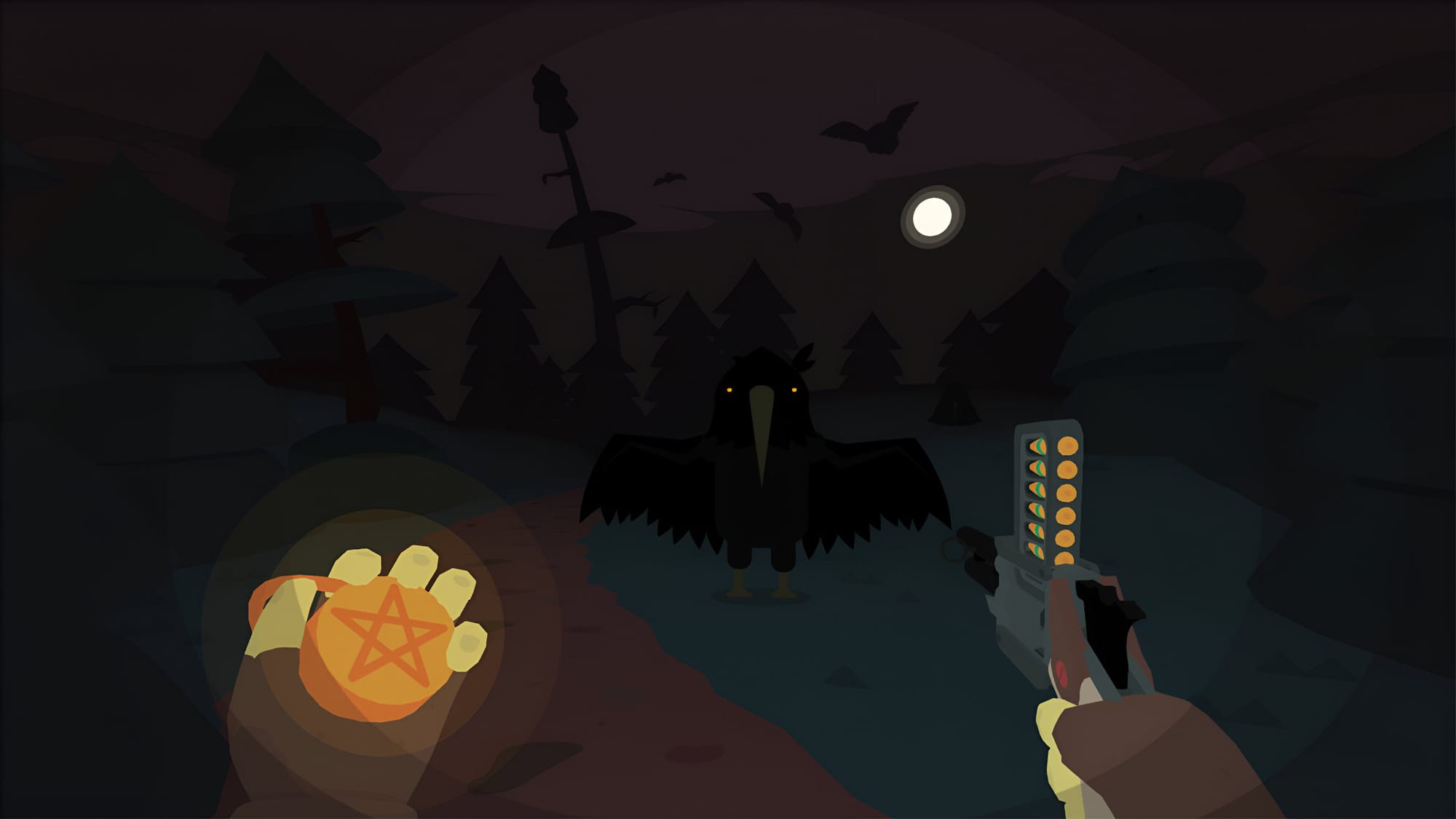
Whether you return safely or die in the dungeon, there's a chance that money will be waiting for you in the mailbox outside the church, a collection of sorts from your parishioners. This may help you buy crucial items before you take off on another run, but I’ve found it helps to just sock it away in your stash box to save up for larger purchases.
Speaking of enemies, there aren’t too many types but there are several variations of each. Smaller enemies like dogs and imps are quick and agile and thus hard to hit with anything but a shotgun. There are grunts with spears, deadly accurate archers, and these other baddies that just stand there and run away after you whack them once with the sword. My guess is they will try to lead you into traps or possibly warn the other enemies of your presence, but I haven’t been able to confirm that. Then there are the special variants of the base enemies. Some are much larger versions of their usual selves, some will explode when killed, some will split into several smaller baddies, etc. I can't adequately express the terror you feel when you're low on ammo or health and one of those types comes lumbering toward you - it must be experienced.
Thirty seconds of terror
The combat in Sulfur reminds me of a line I've heard regarding military service: hours of boredom followed by short bursts of terror. The best way I can describe the unceasingly tense gameplay is with an anecdote from my second day with the game. On a second run, I had found two fantastic weapons, a machine gun, and a shotgun, and upgraded them both with attachments, enhancements, and oils. I was mowing down enemies left and right, making it to the 6th level of the first dungeon with relative ease.
I had peeked into a room and was met by two dogs, quick and elusive enemies that are difficult to take down with any weapon. Backing out to a safe spot, I decided to change to a different weapon, a newly acquired 9mm handgun, to begin leveling it up as well. I once again ventured forth and saw two more dogs bearing down on me. At the same time, one of my own (real) dogs wandered over and distracted me. I panicked, and instead of switching to my reliable shotgun, I backed away from the snarling beasts as I fired and reloaded my 9mm, eventually backing myself into a corner. They quickly killed me and just like that, two hours of careful upgrading, multiple enhancements, and oils, along with hundreds of coins and rounds of ammunition were gone, like they never existed. The entire episode lasted no more than thirty seconds.
Why didn’t I pull out my amulet and warp back to the church? Why didn’t I run circles around the dogs until I got my weapons right? Why didn’t I heal? These are the mistakes and recriminations the game forces you into with intense and unforgiving combat scenarios. Much like with Soulsborne games, any enemy can kill you if you get cocky or make a bad decision. On a side note, it wasn't long after this particularly humbling run that I realized the inventory screen pauses the game, so you don't have to rush to heal yourself before the enemies catch up to you. Apparently, all the Fromsoft games I've played over the years have gotten to my brain.
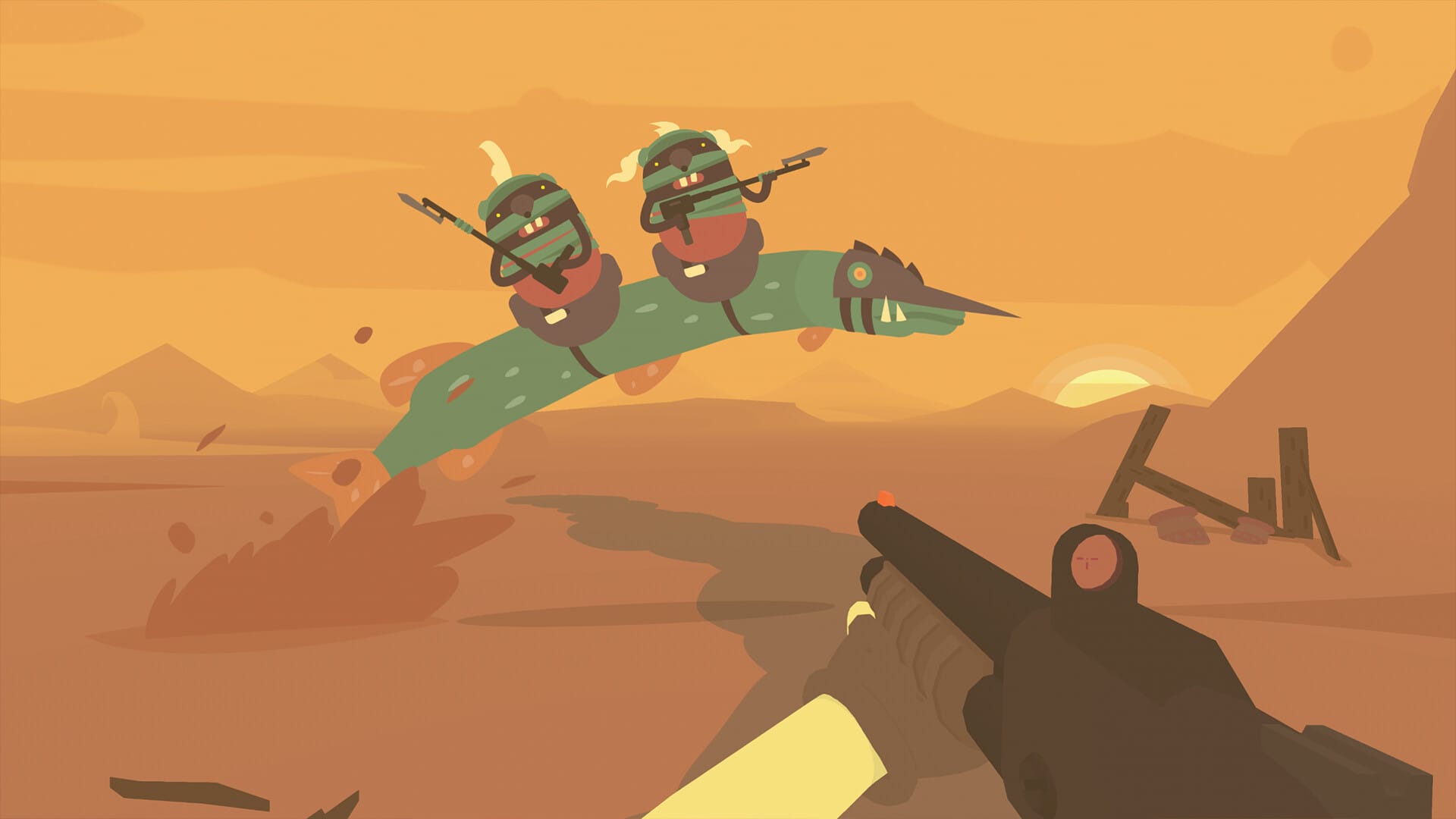
Follow the procedure
Sulfur's dungeons and the content within are procedurally generated (proc-gen for short), which is both a strength and a point of frustration. For the uninitiated, proc gen is a system where the game's levels aren't hand-crafted to be the same every time (think Spelunky or Noita, and you've got the idea). Instead, each room and level is created from a series of assets put together through an algorithm, random chance, or a combination of the two. A game like Sulfur, built around running through the same levels over and over, almost requires a system of randomization to avoid the players getting bored within hours, thus proc-gen was practically made for this.
That is the key strength inherent in the system: players may never see exactly the same thing twice, and each run is highly unlikely to contain the same combination of guns, enemies, and level structure. This is certainly the case with Sulfur, but while at least the first dungeon doesn't have a ton of variety in its rooms, the enemies and goodies you find are completely unpredictable. Sometimes you will go through two straight rooms with nary a glimpse of a goblin, but other runs will see you get bum-rushed by a wave of enemies before you leave the drop-in point. It's exciting, and sometimes incredibly frustrating. Traditional level design sees the challenge ramp up the farther you progress, but here there's no telling what is coming your way, so it can feel arbitrary (which it is) and unfair.
That uncertainty extends to the items you're likely to find along the way. The game is centered on the loot you find and what you do with it, but you can go through multiple levels of a dungeon without ever finding another gun. Sometimes the healing mushrooms are everywhere, more than you can fit into your inventory, but on some runs they seem to be completely absent. I'd really like to see some balancing done by the team at Perfect Random; they don't need to get rid of the system they've built, but finding a way to guarantee each run has at least a chance of success could be key to retaining their player base.
There's a lot to love and discover about Sulfur, and for the studio's first game, it is a remarkable achievement. A gun-loving FPS fan's dream, you can build your own arsenal and test it out on an army of baddies, for hours on end. The knife-edge thrill of knowing when to get out and when to push through could be the difference between a game-altering weapon and piles of gold, or losing an exquisitely-crafted arsenal that took hours to assemble. The resulting action positively drips with tension, and the game is all the better for it. The rough edges need some polishing to provide some accessibility, but maybe this will always be a "git gud" game that revels in its capriciousness and brutal difficulty curve. Either way, it deserves your attention and a chance to get you hooked.
